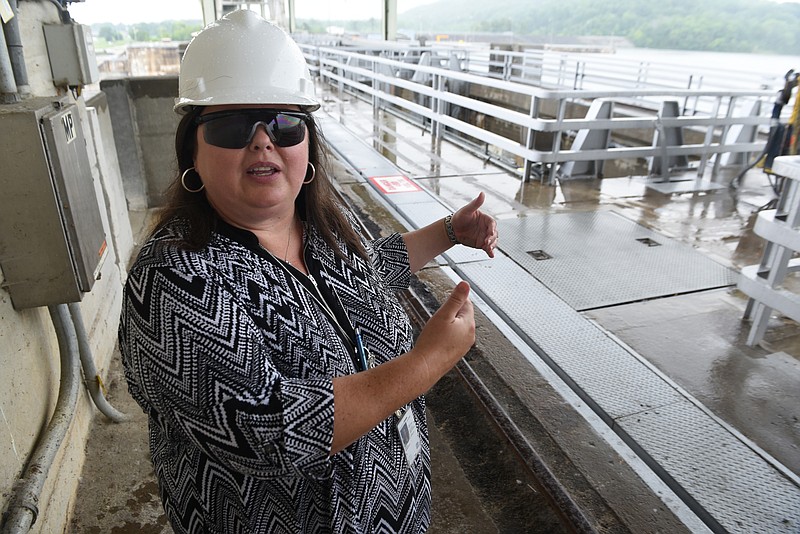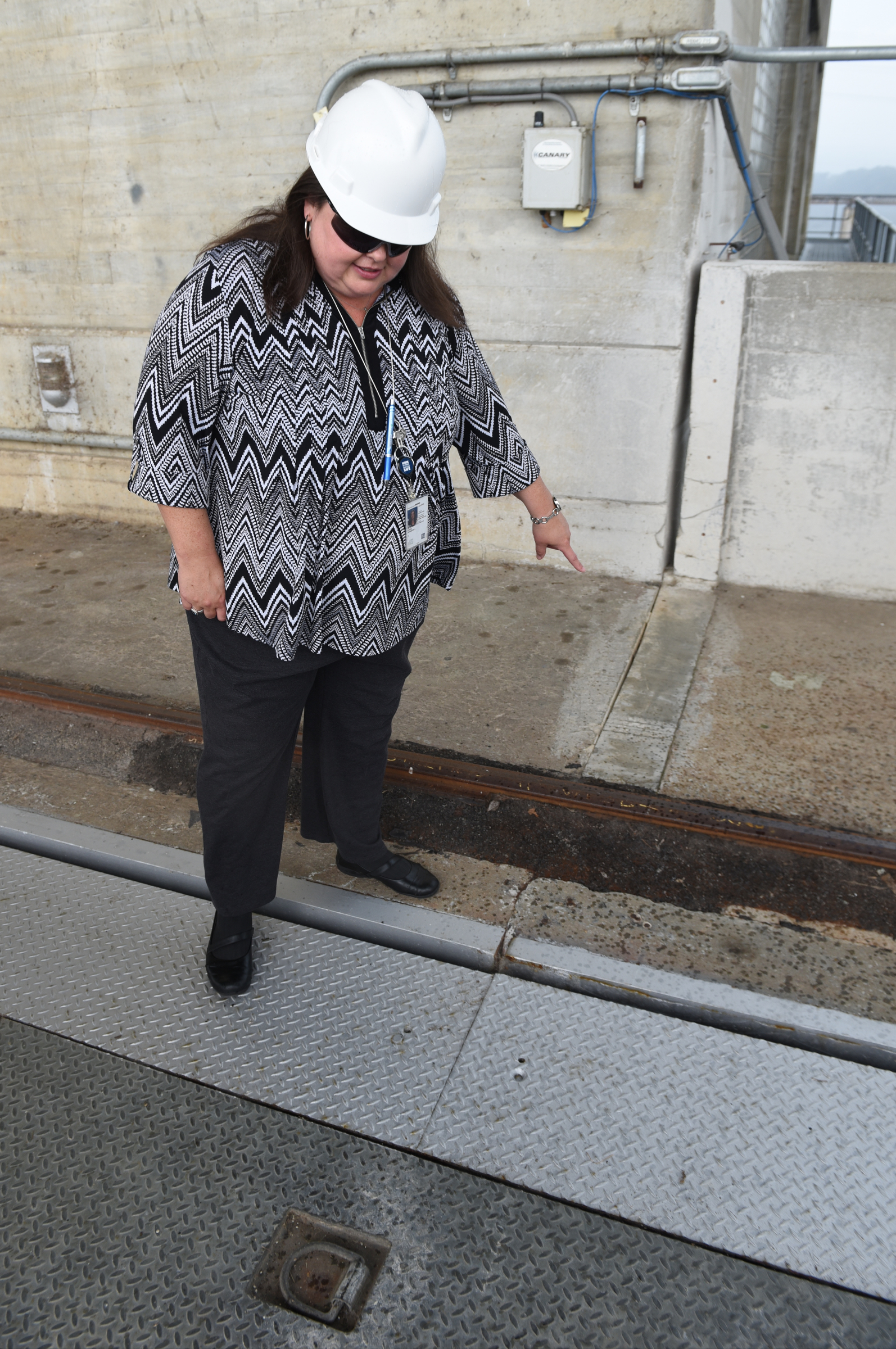Read more
Shippers urge Corps to finish new Chickamauga Dam lock
Seventy-five years after President Roosevelt came to Chattanooga to dedicate the Chickamauga Dam, the TVA-built lock through the 5,800-feet-long dam is crumbling from one of the worst problems of concrete growth of any lock in the United States.
But TVA officials stressed Monday that the dam itself which helps protect Chattanooga from major floods remains secure and safe.
Since the Chickamauga Lock was built in 1940, the local rock aggregate used in the concrete mix has combined with water to create a kind of concrete growth that has put extra pressure around the lock walls and gates and crumbled portions of the lock chamber. Because the dam around the lock is not under such pressure and geometric alignment, the concrete growth has simply expanded outward and not threatened the integrity of the concrete dam, TVA officials said Monday.
"We inspect all of our dams on a regular basis, and I can assure you that our dams are safe," said Jennifer Dodd, manager of TVA's dam safety program.
Since 1940, the Chickamauga Dam has grown by .025 inches per year from the concrete growth, Dodd said. To relieve any stress from that growth, TVA cut slots into the dam in 1997 (about an inch and a half wide) and again in 2008 (5/8 of an inch wide). The utility plans to make another slot in part of the dam in 2017 to relieve any additional stress from the concrete growth.
The concrete growth problem is most pronounced in the lock chamber, which it fitted in the dam and has a variety of gates, release valves and other equipment to allow boats to be lifted or lowered between the Chickamauga and Nickajack reservoirs, which differ in elevation by 45 to 50 feet.
The U.S. Army Corps of Engineers has installed more than 300 post-tension control anchors to help hold the integrity of the lock chamber. But even then, the lock is under stress and shows continuing signs of crumbling.
The Corps has installed more than 2,900 sensors and instruments in the lock to measure how the concrete growth in affecting the lock chambers, intake valves and gates, according to Don Getty, the project manager for the Chickamauga Lock.
The Corps was spending more than $3 million a year on "aggressive maintenance" of the existing lock while it is building a new and bigger lock to replace the existing aging chamber. Those costs have shrunk to about $400,000 a year, but Getty said the Corps can't guarantee how long the existing lock can continue to operate safely.
But Dodd has no such concerns about the Chickamauga Dam as a whole since the concrete growth in the dam walls simply expands outward without the pressure and stress of an operating lock.
TVA monitors the Chickamauga Dam with more than 200 instruments to remotely detect the concrete movement, which TVA continues to model to detect any structural problem. TVA conducts informal reviews of each of the 49 dams every month. A more extensive intermediate examination of each dam is conducted every 15 months and every five years a major inspection and study is conducted on the health of each dam.
The Chickamauga Dam and the other network of dams TVA uses to control the waters of the Tennessee River system is key to protecting Chattanooga.
Since the creation of the Tennessee Valley Authority in 1933, TVA estimates it has helped avert $6.1 billion of flood damage that would have otherwise occurred across its seven-state region. Of those savings, $5.6 billion, or nearly $200 million a year of flood control savings, occurs to the benefit of Chattanooga where rain runoff from thousands of acres of East Tennesee, North Georgia and western Virginia and North Carolina funnels into Chattanooga along the Tennessee River, Dodd said.
Contact Dave Flessner at dflessner@timesfree press.com or at 757-6340.

